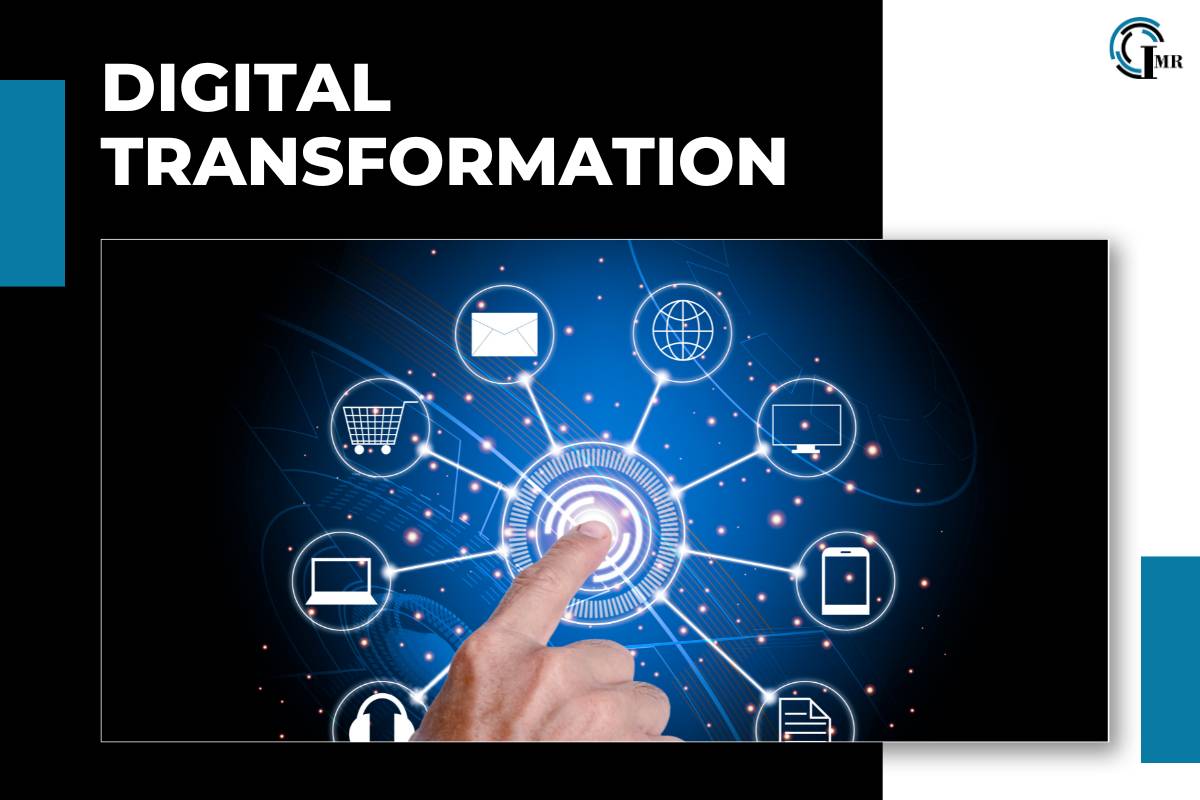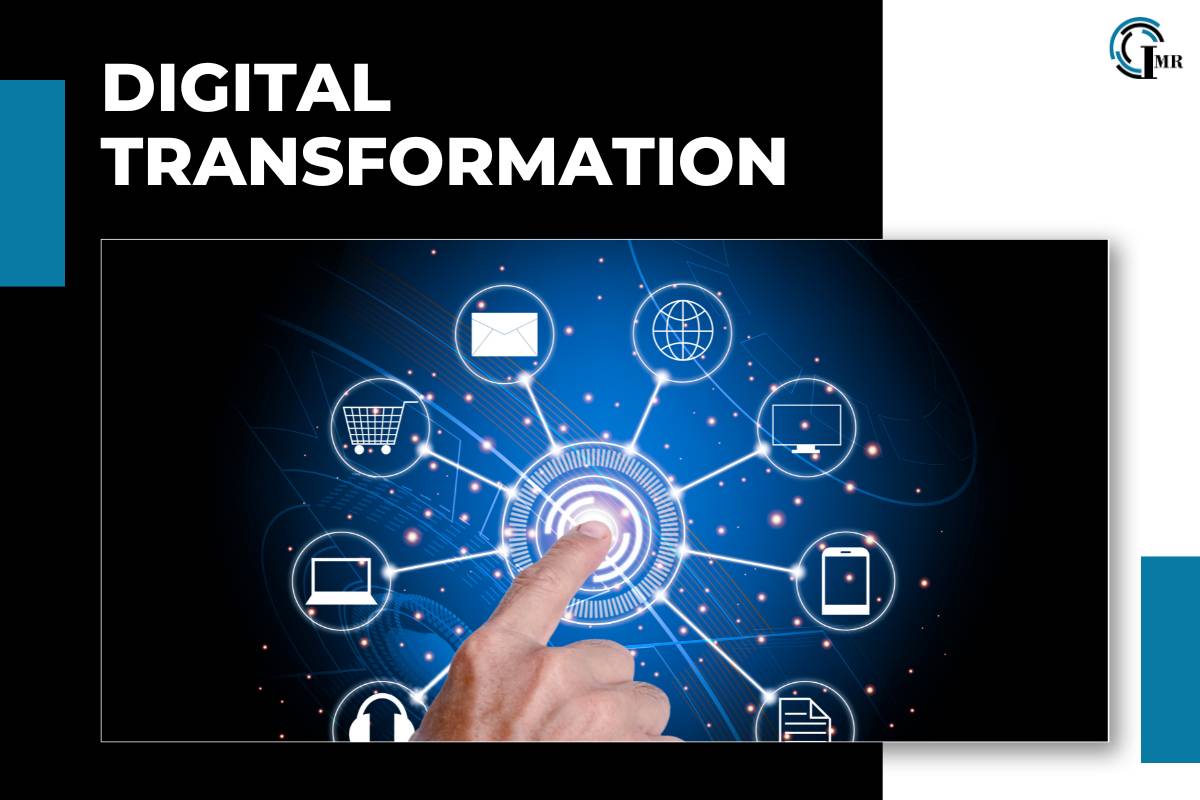How Digital Transformation and Hyperautomation are Shaping Industries?

Digital Transformation and Hyperautomation
Today, the term “digital transformation” has become a buzzword that encapsulates a sweeping shift across various industries. This phenomenon involves integrating digital technologies into all aspects of a business, fundamentally changing how organizations operate and deliver value to customers. As businesses strive to stay competitive and meet the ever-changing demands of the market, this concept has emerged as a crucial strategy.
This blog explores the concept of digital transformation, its benefits, challenges, and the significant role the Hyperautomation industry plays in this transformative journey.
Understanding Digital Transformation
Digital transformation is not just about adopting new technologies; it is about reimagining business processes, culture, and customer experiences to drive growth and efficiency. This comprehensive overhaul involves leveraging technologies such as cloud computing, artificial intelligence (AI), machine learning (ML), the Internet of Things (IoT), and big data analytics. These technologies enable businesses to streamline operations, enhance decision-making, and create innovative products and services.
The Pillars of Digital Transformation

- Customer Experience: The concept places the customer at the center of business strategies. By utilizing data analytics and AI, companies can gain deeper insights into customer behavior and preferences, allowing them to personalize experiences and build stronger relationships.
- Operational Agility: Embracing digital tools and automation enables businesses to respond swiftly to market changes. Agile methodologies and cloud-based solutions foster collaboration, reduce time-to-market and enhance flexibility.
- Culture and Leadership: A successful digital transformation requires a cultural shift within the organization. Leadership must champion the change, promoting a mindset of innovation, continuous learning, and adaptability.
- Workforce Enablement: Empowering employees with digital skills and tools is essential for driving transformation. Training programs, digital collaboration platforms, and AI-driven insights help employees work more efficiently and effectively.
- Digital Technology Integration: Seamless integration of digital technologies across all business functions is critical. This includes leveraging data analytics for informed decision-making, implementing IoT for real-time monitoring, and adopting AI for predictive analytics and automation.
The Role of Hyperautomation in Digital Transformation
One of the most significant trends within digital transformation is hyper-automation. The Hyperautomation industry is revolutionizing how businesses operate by combining advanced technologies to automate complex processes end-to-end. Hyperautomation goes beyond traditional automation by integrating AI, ML, robotic process automation (RPA), and other emerging technologies to create a highly automated and intelligent ecosystem.
Hyperautomation Industry: A Catalyst for Change

The Hyperautomation industry is driving digital transformation by enabling businesses to achieve higher levels of efficiency, accuracy, and scalability. Here are some ways hyper-automation is reshaping the business landscape:
- Enhanced Process Automation: Hyperautomation allows organizations to automate intricate processes that were previously manual and time-consuming. By leveraging RPA and AI, businesses can streamline workflows, reduce errors, and free up employees for more strategic tasks.
- Intelligent Decision-Making: Through the integration of AI and ML, hyper-automation provides businesses with real-time insights and predictive analytics. This empowers decision-makers to make data-driven choices, optimize operations, and identify new growth opportunities.
- Scalability and Flexibility: The Hyperautomation industry offers scalable solutions that can adapt to the evolving needs of a business. Whether it’s handling increased workloads or expanding into new markets, hyper-automation provides the flexibility to scale operations seamlessly.
- Improved Customer Service: By automating routine customer interactions and utilizing AI-driven chatbots, businesses can enhance customer service and provide instant responses to queries. This leads to higher customer satisfaction and loyalty.
- Cost Efficiency: Hyperautomation helps reduce operational costs by minimizing manual intervention, reducing errors, and optimizing resource allocation. This cost efficiency translates to higher profitability and competitive advantage.
Challenges in Digital Transformation
While the benefits of digital transformation are immense, businesses often face several challenges during the implementation process:
- Legacy Systems: Many organizations struggle with outdated legacy systems that are incompatible with modern digital technologies. Migrating from these systems to new platforms can be complex and time-consuming.
- Cultural Resistance: Employees and leadership may resist change due to fear of the unknown or disruption of established workflows. Overcoming this resistance requires effective change management and clear communication.
- Data Security and Privacy: As businesses collect and analyze vast amounts of data, ensuring data security and privacy becomes paramount. Implementing robust cybersecurity measures is essential to protect sensitive information.
- Skills Gap: The rapid pace of technological advancement often leads to a skills gap within the workforce. Investing in training and upskilling programs is crucial to bridge this gap and empower employees with the necessary digital skills.
- Integration Complexity: Integrating various digital technologies and systems can be complex and challenging. Ensuring seamless interoperability and data flow across different platforms requires careful planning and execution.
Strategies for Successful Digital Transformation

To navigate the complexities of digital transformation and harness its full potential, businesses can adopt the following strategies:
- Develop a Clear Vision: Define a clear vision and roadmap for digital transformation. Identify specific goals, milestones, and metrics to measure progress and success.
- Foster a Digital Culture: Promote a culture of innovation and continuous learning. Encourage employees to embrace digital tools and technologies and provide them with the necessary training and support.
- Invest in Technology: Invest in cutting-edge technologies that align with your business objectives. Prioritize solutions that offer scalability, flexibility, and integration capabilities.
- Collaborate with Experts: Partner with technology experts and consultants to gain insights and guidance on best practices for digital transformation. Their expertise can help navigate challenges and optimize implementation.
- Prioritize Data Security: Implement robust cybersecurity measures to protect sensitive data. Regularly assess and update security protocols to stay ahead of potential threats.
- Measure and Optimize: Continuously monitor and measure the impact of digital transformation initiatives. Use data-driven insights to identify areas for improvement and optimize processes.
What’s stored in the Future?
As technology continues to evolve, the future holds exciting possibilities. Emerging trends such as 5G connectivity, augmented reality (AR), virtual reality (VR), and quantum computing are expected to further revolutionize industries and create new opportunities for innovation.
The Hyperautomation industry will play a pivotal role in this future, driving even greater levels of automation and intelligence. Businesses that embrace hyper-automation will be better positioned to thrive in an increasingly digital world, achieving higher efficiency, improved customer experiences, and sustained growth.
Conclusion
Digital transformation is no longer an option but a necessity for businesses seeking to stay competitive in today’s fast-paced market. By reimagining business processes, fostering a culture of innovation, and leveraging advanced technologies, organizations can unlock new levels of efficiency, agility, and customer satisfaction. The Hyperautomation industry, with its powerful combination of AI, ML, RPA, and other emerging technologies, is at the forefront of this transformation, enabling businesses to achieve unprecedented levels of automation and intelligence.
Embracing digital transformation is a journey that requires vision, strategy, and commitment. As businesses navigate this journey, they must be prepared to overcome challenges, invest in technology, and prioritize data security. By doing so, they can harness the full potential of digital transformation and position themselves for success in the digital age.





Comments